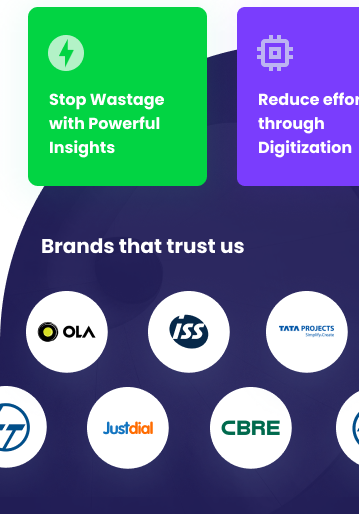The pursuit of a sustainable future has never been more urgent. With increasing energy demands, rising operational costs, and a global push for environmental responsibility, businesses must adopt innovative solutions to manage energy efficiently. One of the most effective tools to achieve this is the Building Management System (BMS). By leveraging advanced technologies, BMS enhances energy efficiency, reduces waste, and paves the way for sustainable building operations.
In this blog, we explore how BMS plays a key role in creating energy-efficient buildings that contribute to a greener future.
What is a Building Management System (BMS)?
A Building Management System (BMS) is a centralized platform that monitors and controls a building’s critical systems, such as HVAC, lighting, power, water, and security. By collecting real-time data, BMS enables automated adjustments, ensuring optimal energy performance with minimal human intervention.
Modern BMS platforms, such as Know Your Building®, are cloud-native and wireless, making them highly scalable and easy to integrate across large-scale properties. These systems provide building managers with actionable insights to reduce energy consumption, cut costs, and improve overall operational efficiency.
How BMS Enhances Energy Efficiency
1. Optimizing HVAC Systems
Heating, ventilation, and air conditioning (HVAC) systems account for a significant portion of energy usage in commercial buildings. A BMS continuously monitors HVAC performance, adjusts temperature settings based on occupancy, and optimizes airflow to minimize energy waste.
- Automated Scheduling: Adjusts heating and cooling schedules based on building usage patterns.
- Zone Control: Regulates HVAC operations in specific areas rather than the entire building.
- Reduced Energy Waste: Minimizes overcooling or overheating in unoccupied spaces.
For example, Know Your Building® uses real-time occupancy data to optimize HVAC systems, reducing energy consumption by up to 30%.
2. Smart Lighting Management
A significant amount of energy is wasted on unnecessary lighting. A BMS integrates smart lighting systems to optimize energy usage based on occupancy and natural light availability.
- Daylight Harvesting: Adjusts artificial lighting levels to complement natural light.
- Occupancy Sensors: Turns off lights in unoccupied rooms or spaces.
- Dimming Controls: Reduces lighting intensity during non-peak hours.
By implementing these features, businesses can achieve 20-40% energy savings on lighting alone.
3. Real-Time Monitoring and Analytics
The ability to track energy consumption in real time is a game-changer for energy efficiency. A BMS provides detailed analytics and reports that help identify inefficiencies and areas for improvement.
- Energy Dashboards: Visualize real-time energy data across systems and zones.
- Performance Insights: Highlight equipment or processes consuming excess energy.
- Predictive Analytics: Anticipate maintenance needs to prevent energy loss.
For instance, Know Your Building® offers energy performance reports that enable building managers to take immediate action on energy anomalies, ensuring maximum efficiency.
4. Automated Energy Controls
A BMS automates critical building functions to ensure consistent energy-saving measures. It can adjust temperature, lighting, and ventilation systems automatically based on pre-defined conditions and schedules.
- Peak Load Management: Reduces energy consumption during high-demand periods.
- Scheduled Automation: Aligns energy usage with working hours and occupancy levels.
- Seamless Integration: Connects with renewable energy sources like solar panels to optimize consumption.
Automated controls ensure that energy savings are consistent and do not rely on manual intervention.
5. Enhanced Equipment Efficiency
A BMS continuously monitors equipment performance to ensure optimal energy usage. By detecting inefficiencies, faults, or wear and tear in real time, it prevents energy losses and extends the lifespan of critical systems.
- Fault Detection: Identifies underperforming equipment or energy leaks.
- Predictive Maintenance: Schedules timely repairs to maintain peak performance.
- Efficiency Tracking: Monitors the energy efficiency of HVAC, lighting, and other systems.
For example, a BMS can detect when an HVAC filter is clogged, reducing system efficiency. By alerting managers to perform timely maintenance, the system ensures optimal energy performance.
The Role of Cloud-Native BMS in Sustainability
Traditional BMS solutions were often limited by infrastructure requirements and lacked scalability. Cloud-native BMS platforms, such as Know Your Building®, are changing the game by offering scalable, wireless, and data-driven solutions.
Key Advantages:
- Scalability: Deployable across multiple properties without extensive hardware installation.
- Accessibility: Access energy data anytime, anywhere via cloud platforms.
- Cost-Effectiveness: Reduce operational and maintenance costs with automated processes.
- Environmental Impact: Lower carbon emissions by optimizing energy usage.
Cloud-native BMS enables businesses to meet sustainability goals while maintaining operational efficiency.
Why Energy Efficiency Matters for a Sustainable Future
Energy-efficient buildings are not only cost-effective but also essential for reducing environmental impact. By adopting BMS solutions, businesses can:
- Lower Operating Costs: Reduce utility bills and maintenance expenses.
- Achieve Sustainability Goals: Minimize carbon footprint and meet green building standards.
- Enhance Property Value: Increase the value of real estate through energy-efficient systems.
- Regulatory Compliance: Align with energy efficiency regulations and gain certifications.
For businesses aiming to build a sustainable future, energy efficiency is no longer optional—it’s a necessity.
Leading the Future with Know Your Building®
At Know Your Building®, we empower businesses to enhance energy efficiency and sustainability with our cloud-native wireless BMS solutions. By providing real-time monitoring, automated controls, and predictive insights, our platform enables property owners and managers to:
- Reduce energy costs by up to 30%.
- Optimize HVAC, lighting, and equipment performance.
- Meet sustainability goals with ease.
- Future-proof their properties for long-term energy efficiency.
Our solutions are designed to create smarter, greener, and more sustainable buildings for the future.
Driving Energy Efficiency for a Sustainable Tomorrow
Building Management Systems are at the forefront of the global energy efficiency revolution. By optimizing HVAC, lighting, and equipment operations, BMS plays a crucial role in reducing energy waste and achieving sustainability goals. Cloud-native platforms like Know Your Building® are leading this transformation, empowering businesses to build energy-efficient, cost-effective, and environmentally responsible properties.
The future is clear: energy efficiency is the key to sustainability, and Know Your Building® is here to lead the way.














